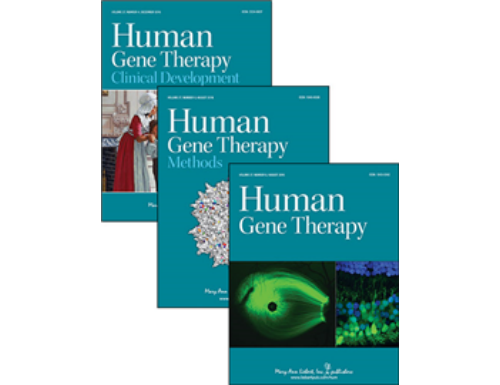Recent advances in gene editing technology, which allows for targeted repair of disease-causing mutations, can be applied to hematopoietic stem cells with the potential to cure a variety of hereditary and congenital diseases. Gene editing can overcome many of the obstacles associated with gene addition therapies, but this young field still faces many challenges before it is ready for human testing, as discussed in a review article published in Human Gene Therapy, a peer-reviewed journal from Mary Ann Liebert, Inc., publishers. The article is available free on the Human Gene Therapy website until October 31, 2016.
The article entitled “Gene Editing of Human Hematopoietic Stem and Progenitor Cells: Promise and Potential Hurdles” is part of a special joint issue on stem cell gene therapy in Human Gene Therapy and Stem Cells & Development guest edited by Luigi Naldini, M.D., scientific director, San Raffaele Telethon Institute for Gene Therapy, Milan, Italy. A special “upside-down” print issue will be distributed at ESGCT/ISSCR Florence 2016 in October.

Human Gene Therapy. (Credit: Mary Ann Liebert, Inc.)
Kyung-Rok Yu, Hannah Natanson, and Cynthia Dunbar, National Heart, Lung, and Blood Institute, National Institutes of Health, Bethesda, MD, describe how earlier gene addition strategies and the hurdles they encountered have informed the current development of gene editing approaches. The authors present the state-of-the-art in gene editing technology and the potential to apply these novel techniques to repair genetic flaws in hematopoietic stem cells, which give rise to the different types of cells in blood, and then to test those strategies in human clinical trials.
“Gene editing is the hottest new technology in gene therapy. The use of this approach to genetically modify hematopoietic stem and progenitor cells is very promising, but requires a careful assessment,” says Editor-in-Chief Terence R. Flotte, M.D., Celia and Isaac Haidak professor of medical education and dean, provost, and executive deputy chancellor, University of Massachusetts Medical School, Worcester, MA. “This mini-review by Dr. Dunbar’s group at NIH provides a very insightful analysis of recent advances and current limitations of this approach.”
(Source: AlphaGalileo)


